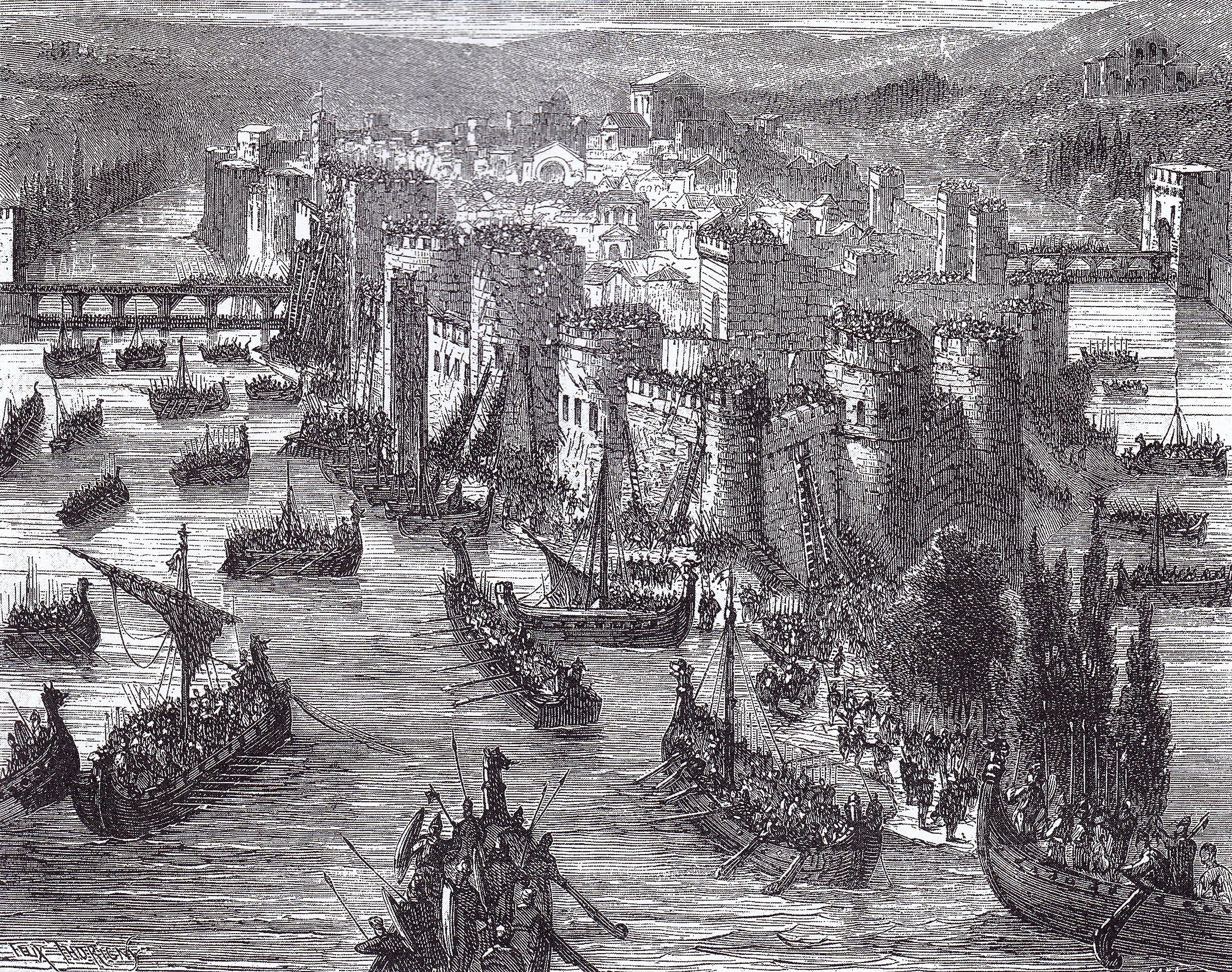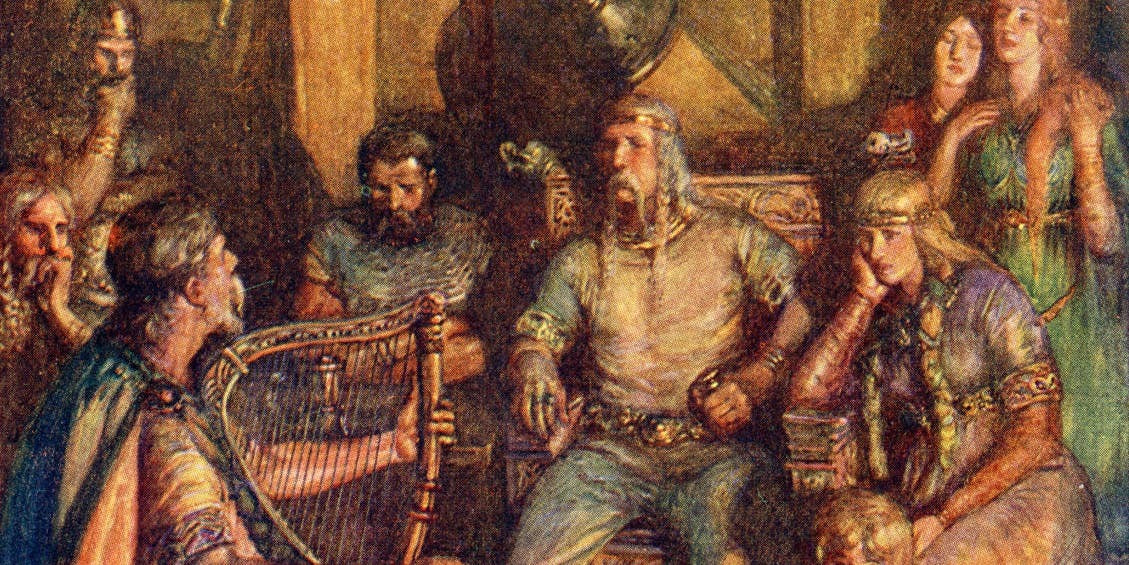
Reginherus and Ragnar Lothbrok: A Historical Examination
In the annals of Viking history, two figures stand out for their prominence and the mystery that surrounds them - Reginherus, a Viking leader known for his role in the Siege of Paris in 845, and Ragnar Lothbrok, a legendary figure whose exploits are narrated in Old Norse sagas and medieval Latin sources. This article delves into the lives of these two figures, exploring the possibility that they might be the same person. Through a careful examination of historical records and literary sources, we aim to shed light on this intriguing hypothesis and contribute to the ongoing scholarly debate.
Reginherus:
Also known as Reginheri, was a Viking leader in the early 9th century. He is primarily known from Latin Frankish sources, which mention him as the leader of a group of Vikings who raided Paris in West Francia in 845. This event, known as the Siege of Paris, was a significant episode in the Viking invasions of West Francia.
Reginherus’s fleet, consisting of 120 Viking ships and carrying thousands of warriors, entered the Seine in March and sailed up the river. The Frankish king Charles the Bald assembled an army in response, but after the Vikings defeated one division, comprising half of the army, the remaining forces retreated. The Vikings reached Paris at the end of the month, during Easter. They plundered and occupied the city, withdrawing only after Charles the Bald paid a ransom of 7,000 French livres (approximately 2,570 kg) in gold and silver.

Illustration of Ragnar slaying the dragon / Public Domain
Reginherus was probably allied with the Danish king Horik I, but no further details about him are known. According to the Annals of Xanten, he was said to have been killed in 845. It is probable that the Raginarius mentioned by Rimbert is identical to Reginherus. It is often assumed that Reginherus represents the historical core of the story of Ragnar Lodbrok.
Despite his notable role in the Siege of Paris, further details about Reginherus’s life and exploits remain shrouded in mystery. His actions during the siege set a precedent for large payments to Viking chiefs for protection. His potential identification with the legendary saga character Ragnar Lodbrok continues to be a subject of scholarly debate. The lack of direct historical records makes it difficult to conclusively prove this connection, and further research is needed to confirm this link.
Ragnar Lothbrok:

Ragnar Lodbrok meets Kraka / Public Domain
Ragnar Lothbrok, whose epithet translates to ‘Hairy-breeches’ or ‘Shaggy-breeches’, is a figure steeped in legend and folklore. As a purported Viking king, his exploits and adventures are narrated in Old Norse sagas, medieval Latin sources, and poetry. These accounts tell of his accomplishments across Scandinavia, Francia, and Anglo-Saxon England during the 9th century CE.
Ragnar is said to have led numerous raids into France and England, and was reportedly given land by Charles the Bald, before betraying the covenant and sailing up the Seine to besiege Paris. After the siege, he was paid off with a significant amount of silver and gold, which led to his departure.
However, the historicity of Ragnar Lothbrok is a topic of intense debate among historians and scholars. While his name and exploits are well-documented in various sources, it is challenging to distinguish the historical facts from the embellishments of legend.
The Connection
The connection between Reginherus and Ragnar Lothbrok is primarily based on the Siege of Paris in 845, a significant event in the Viking invasions of West Francia. The Viking forces in this siege were led by a Norse chieftain named “Reginherus”, who has been tentatively identified with the legendary saga character Ragnar Lodbrok.
This event is a key point in the potential identification of Reginherus with Ragnar Lothbrok. The name 'Ragnar' can also be spelt as 'Regner', and could be a shortened form of “Reginherus”, and the exploits attributed to Ragnar in the sagas are consistent with the actions of Reginherus as described in the historical accounts of the Siege of Paris.
However, it’s important to note that this identification is not universally accepted. The sagas were written centuries after the events they describe, and their historical accuracy is often disputed. Furthermore, “Ragnar” was a common name in the Viking Age, and it’s possible that the sagas conflated the deeds of several different individuals under the name of Ragnar Lothbrok
The Sagas and Historical Records

'Ragnar Lodbroks död', by Hugo Hamilton, depicting Ælla of Northumbria's murder on Ragnar Lodbrok.
The main source telling of Ragnar’s life and heroic deeds is the 13th-century Icelandic 'The Saga of Ragnar Lothbrok’. Other sagas mentioning him include Heimskringla, Sögubrot, Tale of Ragnar’s Sons, and Hervarar Saga. However, there are no sagas or historical records that directly mention Reginherus.
The identities of Reginherus and Ragnar Lothbrok continue to fascinate historians and scholars alike. While there is some evidence suggesting a connection between these two figures, the lack of direct historical records complicates the task of conclusively proving this link. The historicity of Ragnar Lothbrok, steeped in legend and folklore, adds another layer of complexity to this investigation. Despite these challenges, the potential identification of Reginherus with Ragnar Lothbrok opens up new avenues for understanding Viking history and culture.








